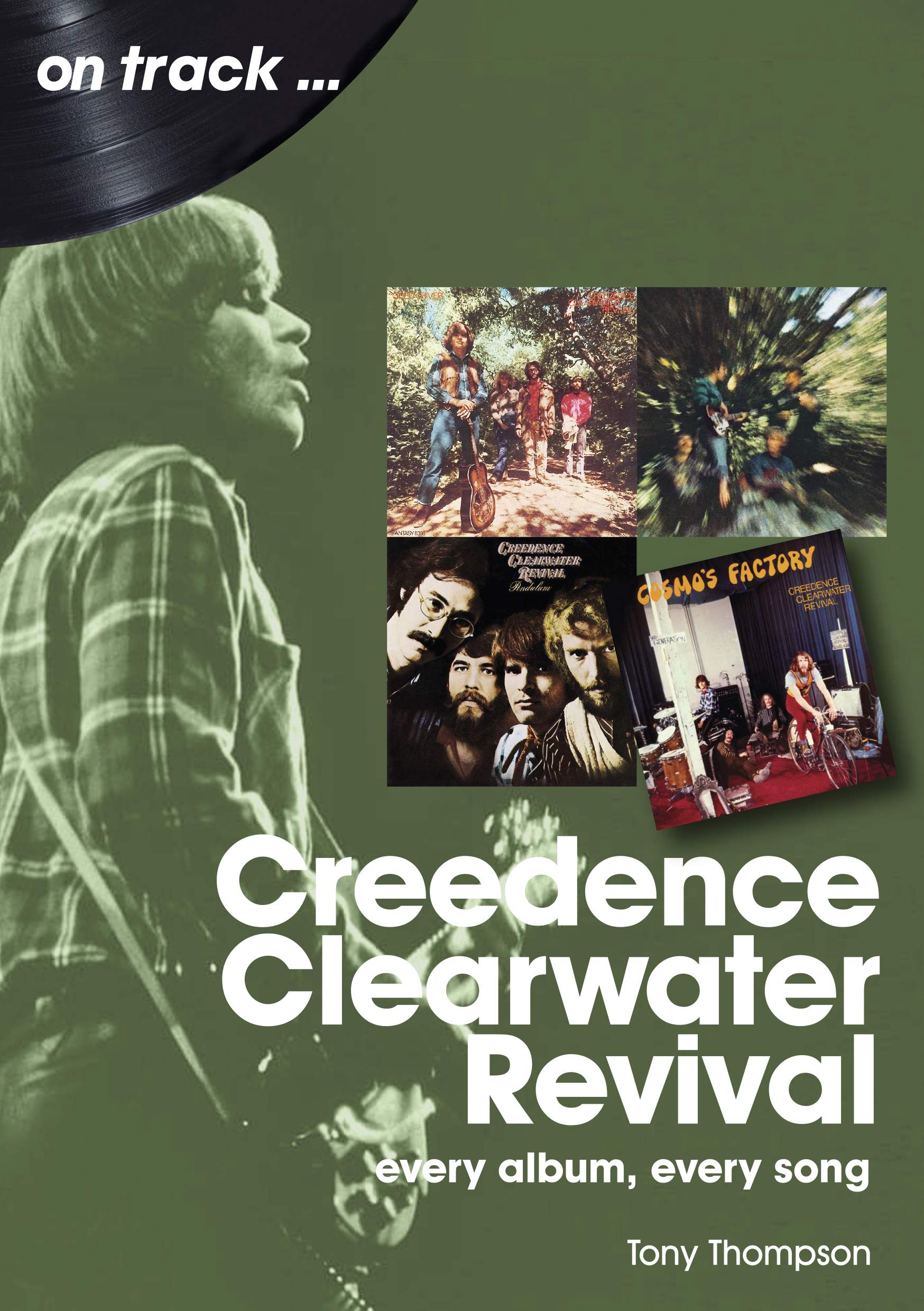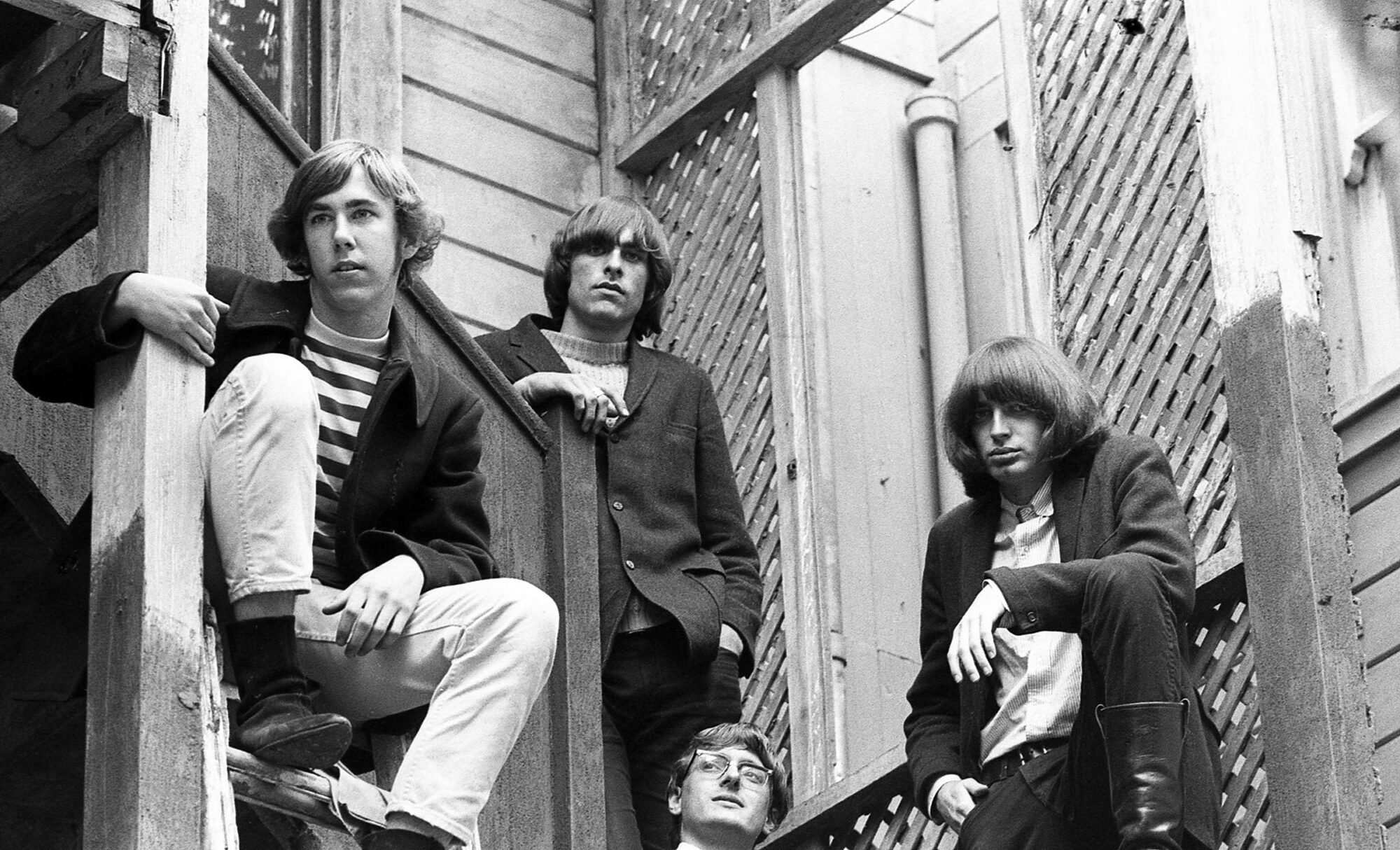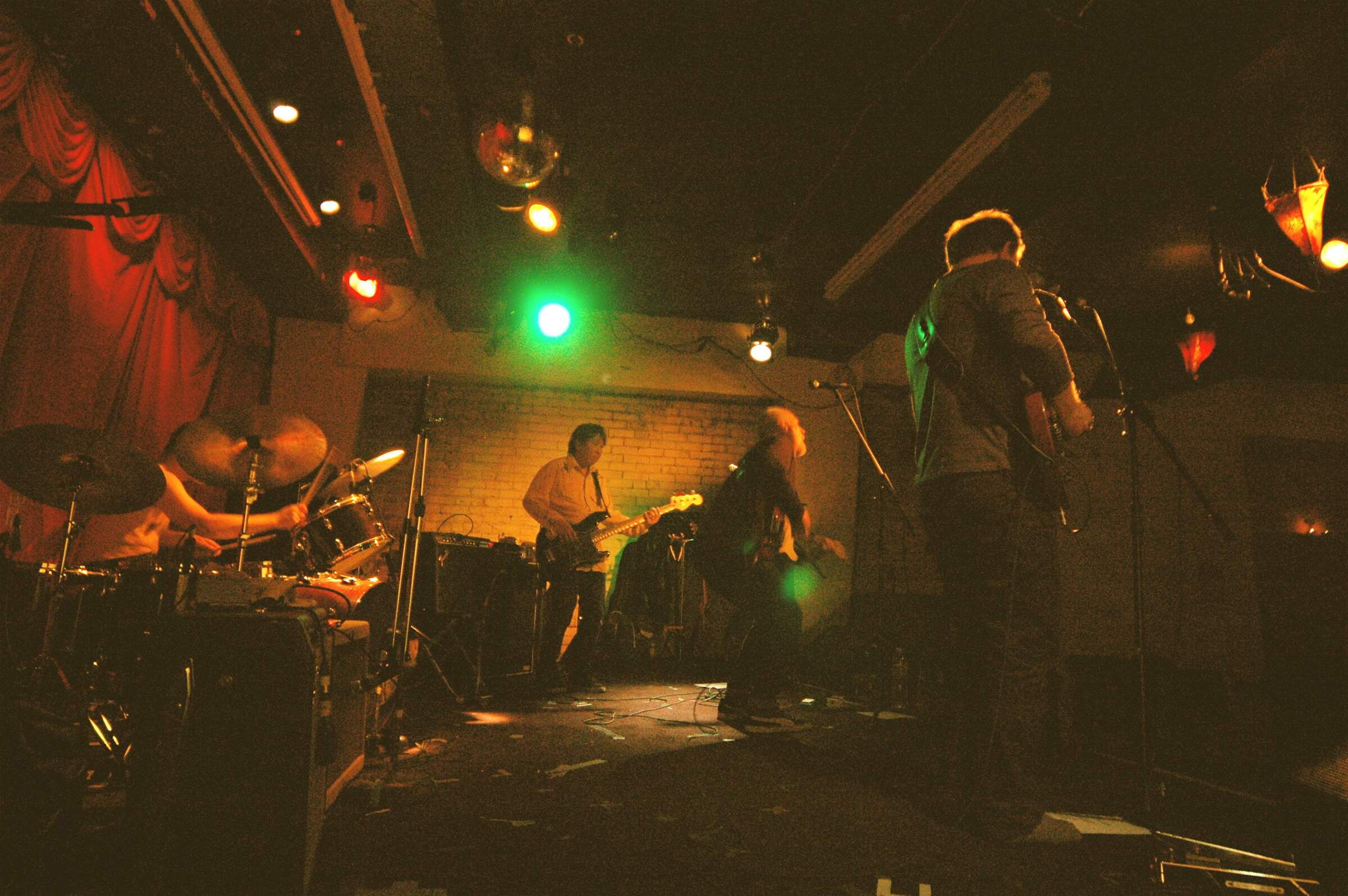Tony Thompson – ‘On Track: Creedence Clearwater Revival – Every Album, Every Song’
Sonicbond’s popular series continues with this analysis of the band that at one time outsold even The Beatles and by the time of their Woodstock appearance was the biggest band in the U.S. despite never having a Number One single at home!
As is typical with the ‘On Track’ series, Thompson packs a lot of information into a tight package of slightly over 100 pages plus John Fogarty’s solo career and a collection of colour photos, including album covers and several US TV appearances. A mixture of facts and interesting trivia keeps the story rolling along and Thompson’s opinions are backed by well thought out discussions of the contemporary political and social elements often reflected in John Fogarty’s lyric supplemented by numerous references to Fogerty’s autobiography (Fortunate Son) for additional support.
Thompson begins his story with three classmates at Portola Junior High School in El Cerrito, California who began fooling around in the music room at lunchtime: John Fogerty on guitar, Doug Clifford on drums, and Stu Cook on piano. They called themselves The Blue Velvets and were soon backing up John’s older brother Tom. Tommy Fogerty and the Blue Velvets released three singles on Orchestra Records between 1961-63 and a half dozen more as The Golliwogs for Fantasy and Scorpio between 1964-66. Most of these were in a garage rock style a la Rolling Stones and Them. Each chapter concludes with references to obscure rarities and other related recordings that didn’t appear on the official albums, but notes that Fogerty typically came to the recording sessions with the album and single content in his head, so few outtakes and alternate versions exist.
Thompson offers helpful suggestions for the band’s influences and precursors, pointing out where John picked up his distinctive guitar style from the likes of Scotty Moore, “Pop” Staples, Hubert Sumlin, James Burton, and Buck Owens. Fogerty also credits the influence of Booker T and the MGs, calling them “the greatest rock and roll band.” Along the way, the band easily incorporated elements of rockabilly, country, swamp rock, pop, garage, and, on ‘Cosmo’s Factory,’ accidentally invented Southern Rock!
Walking through each album, Thompson offers his thoughts on the merits (or lack thereof) of each song, placing the album in the context of other albums at the time, beginning with their eponymous debut in 1968 alongside debuts from The Band (‘Music From Big Pink’) and Dr. John (‘Gris Gris’). With Tony Joe White’s ‘Polk Salad Annie’ also recorded in 1968, Thompson christens it “year zero for Swampadelica.” Another key to CCR’s success was Fogerty’s insistence that the songs be rehearsed and arranged before entering the studio so the band could get them down in three to five run-throughs. This practice would continue through most of their recording sessions.
The debut sets a template that would be honoured throughout their career, from lyrics championing the working man to carefully chosen covers that struck a balance between whatever made the song worth covering while simultaneously making something new and exciting out of it. Their lengthy covers of ‘Suzie Q’ and particularly ‘I Heard It Through The Grapevine’ are textbook examples of how to take a well-known song and make it your own and remain highlights of their already impressive discography of Fogerty originals. ‘Walk On The Water’ is cited as an early example of Fogerty’s lyrics “tending towards a religious atmosphere rather than a spiritual sensibility.” Thompson ultimately rates the debut “ a seriously underrated album” that is raw and occasionally stumbles (‘Get Down Woman’) but is “an exhilarating snapshot of a great band taking flight.” ‘Porterville’ in particular is significant in marking Fogerty’s movement “away from romantic musings and towards narrative songs” which would become one of his strong suits.
Sophomore effort ‘Bayou Country’ is presented as a concept album about the south, written by a northerner, but also introduces the influence that movies had on Fogerty’s lyrics. Thompson’s intriguing, thoughtful analysis of the lyrics throughout the book sheds new light on potential hidden meanings, but also brings new views to the surface to show that Creedence songs were much more than catchy tunes you could hum to and tap your foot along with. ‘Bootleg’ highlights what Thompson suggests is Tom Fogerty’s often overlooked contributions as a rhythm guitarist and in fact, he champions both Clifford’s and Cook’s solid rhythm section throughout the book, dispelling the occasional complaints against their talents proffered by critics (and John Fogerty).His lengthy contextual analysis of ‘Proud Mary’ also adds to the enjoyment of CCR’s “best-loved song.” And his explanation for what it means to ‘Keep On Chooglin’’ is as good as any other you’re likely to hear.
While many bands might start to lose steam and quality by the time they record their third album, Thompson considers Green RiverCreedence’s best album. Among many highlights, it was also a transitional album that saw them successfully juggle hit singles with deeper album tracks such as ‘Wrote A Song For Everyone’ and ‘Cross Tie Walker.’ The title track is favourably compared with the work of Hemingway and could be an early contender for the first “hauntological” song. It’s also tagged as one of the highlights of their career. ‘Bad Moon Rising’ reflects the atmosphere following the assassinations of Robert Kennedy and Martin Luther King, but also provided “one of the most famous ‘mondegreens’ in rock and roll history” as fans and newbies alike are wont to sing “There’s a bathroom on the right” instead of “There’s a bad moon on the rise.” Not exactly up there with Hendrix’s “’Scuse me while I kiss this guy”, but Fogerty has been known to join in on the fun and sing the “incorrect” verse onstage! Finally, Thompson describes ‘Lodi’ as if it were a Twilight Zone episode, which makes perfect sense after reading his analysis, even though I’ve heard the song hundreds of times, I never made the connection until now.
‘Willie And The Poor Boys’ was a name Fogerty selected for the fourth album (and third in 1969) from AA Milne’s famous character (Winnie And The Pooh Boys!) The working class and film inspired several songs, from ‘It Came Out Of The Sky’’s science fiction theme to the cover of Leadbelly’s ‘Cotton Fields.’ ‘Fortunate Son’ finds Fogerty addressing political issues with such ferocity that Thompson labels it “among the most visceral protest songs of the 1960s” and notes that some writers called it the “first punk song” (hardcore punks The Circle Jerks covered it). It resonated with so many people that it was placed on the National Recording Register at the Library of Congress for its cultural significance and artists as diverse as Cat Power, U2 and Bruce Springsteen have also recorded and/or performed it.
The band return to Leadbelly for a storming version of ‘Midnight Special’ which reveals their fondness for the work of Pop Staples (Thompson calls it “gospel with rockabilly flourishes” and Fogerty’s favourite band Booker T And The MGs are clearly at the heart of ‘Feelin’ Blue’ and particularly ‘Side O’ The Road.’ In summary, Thompson proudly proclaims ‘Willie And The Poor Boys’ “one of the great rock and roll albums.”
By the time Creedence released their fifth and some would argue finest album, Cosmo’s Factory, they were outselling the Beatles and were culminating a two-year period when at least one of their singles was on the charts. Fogerty calls it the “culmination” of Creedence’s career, although Green River was his favourite album. Thompson on the other hand is not as enthusiastic, saying it “lacks cohesion”, particularly when compared to the two “concept albums” that preceded it which each told a story. The problem for Thompson is encapsulated in his review: “three singles and their B-sides, four covers, and ‘Ramble Tamble.’ Sure it’s a great collection of songs, but what does it all mean?” I’ll have to disagree with Thompson on this one as it’s my personal favourite, the one I return to whenever I’m in the mood to hear some CCR at their peak. ‘Ramble Tamble’ alone is worth the price of admission, a powerful storm a-brewing that finds the group firing on all cylinders, even though there was dissension in the ranks that would ultimately lead to Fogerty’s brother quitting after the next album and the band dissolving after the following one.
One of the other things that bothered Thompson was Fogerty’s insistence on playing the sax himself on tracks like ‘Travelin’ Band.’ This is a complaint he’ll return to on several occasions (cf., ‘Long As I Can See The Light’), suggesting that Fogerty had his pick of session men who could add more to the songs involved. But the audience didn’t seem to mind, as it once again raced up the charts only to stall once again at Number Two in the US, where Creedence holds the ignominious distinction of having the most Number Two singles without ever having a Number One (five; seven if you count the double-A sides!)
Other memorable tracks include ‘Looking Out My Back Door’ (often mistaken as a drug song, but actually based on several children’s books) and ‘Run Through The Jungle’ which Thompson praises as “one of the more haunting songs of the era” even though it led to a nasty lawsuit from the band’s own label that was settled in Fogerty’s favour and ultimately changed the Copyright Act to allow him (and others) to compose music in the “Swamp Rock” style! ‘Who’ll Stop The Rain’ is one of the great CCR singles and has even had a film named after it, a turnabout fair play for all the films that inspired Fogerty’s other songs mentioned above. ‘I Heard It Through The Grapevine’ is both the longest song they ever recorded and also their best cover, although Thompson admits the lengthy guitar solos are a matter of taste. The oft-criticized (by Fogerty among others) rhythm section is at their best here with Thompson once again coming to their aid as he does throughout the book.
‘Pendulum’ is labeled an “unfinished” album by Thompson, who again criticizes Fogerty’s sax playing. In my opinion the songs are weaker, the band is in disarray wanting more involvement in the recording sessions and arrangements, and while Thompson does suggest it’s “flawed but satisfying”, he also admits it’s their “least commercial” effort. Tom would quit after its release, leaving the band to carry on as a trio for their disastrous final album. Here ‘Pagan Baby’ “doesn’t go anywhere”, ‘Sailor’s Lament’ is “half-baked”, and ‘Chameleon’ is “flat.” Not even ‘Have You Ever Seen The Rain’, which Thompson praises as “not only one of the best CCR songs, but a great single, period” can save this disappointing album. But the worst was yet to come.
Even Thompson calls ‘Mardi Gras’ “their worst album” while also admitting he actually likes it! He may be the only one. Rolling Stone critic Jon Landau (who Thompson annoyingly refers to as “John” on too many occasions) called it “the worst album I’ve ever heard from a major rock band” and trying to pass it off as “the story of a band on the verge of breaking up” (as Thompson does) doesn’t excuse the mess we’re presented with. Fogerty’s magnanimous decision to let the other members (Cook and Clifford) write and sing their own songs backfired, resulting in the weakest tracks in the band’s discography, particularly Cook’s ‘Sail Away’, labelled as “the most inept vocal performance ever to appear on a major band’s album.” And his ‘Take It Like A Friend’, which Thompson surmises was aimed at Fogerty is even worse: “lame”, “vile” and “awful” are just some of his descriptions.
As with the previous album Fogerty comes up with a gem of a single (‘Someday Never Comes’ is one of John Fogerty’s finest moments’, beating Harry Chapin’s ‘Cats In The Cradle’ to the punch as one of the great songs about children becoming their own parents) and ‘Sweet Hitch-Hiker’ is a full-throttle rocker” that was their last taste of the top ten. Ultimately, it’s a bitter album with the members taking swipes at each other in their lyrics and one of the highlights is a cover of a cover (‘Hello Mary Lou’ was a hit for Ricky Nelson, who recorded the most popular version of this Gene Pitney classic.)
In addition to Thompson’s thoughtful analyses, he includes references to several cover versions of many of the songs so you can compare how others have interpreted Fogerty’s songs, and he also tells us if (and how often) the songs were played live. It’s interesting to note songs that for one reason or another (carefully explained by Thompson) were never played live and which were staples of their sets.
Thompson wraps up his analysis with a list of live albums worth investigating, several infrequent but generally poor quality bootlegs to avoid and then focuses on their post-CCR releases, but mainly concentrates on John’s albums. Sadly, Creedence Clearwater Revisited, the band Cook and Clifford have performed in for nearly the last thirty years is not mentioned, nor is Southern Pacific, a band Cook was in for three albums and who recorded the greatest CCR sound-alike track (‘A Cold Night For Alligators’ on the Roky Erickson tribute album ‘Where The Pyramid Meets The Eye’. Cook had produced several of Roky’s post-13th Floor Elevators’ albums, so his then-current band was a natural to contribute and it’s one of the highlights of a generally excellent album.) But overall, this is a well written and informative book that’s not too academic, and doesn’t pull any punches when discussing the real stinkers in their catalogue. Every fan of the band will enjoy this.
Jeff Penczak
Tony Thompson – ‘On Track: Creedence Clearwater Revival – Every Album, Every Song’ (Sonicbond)




